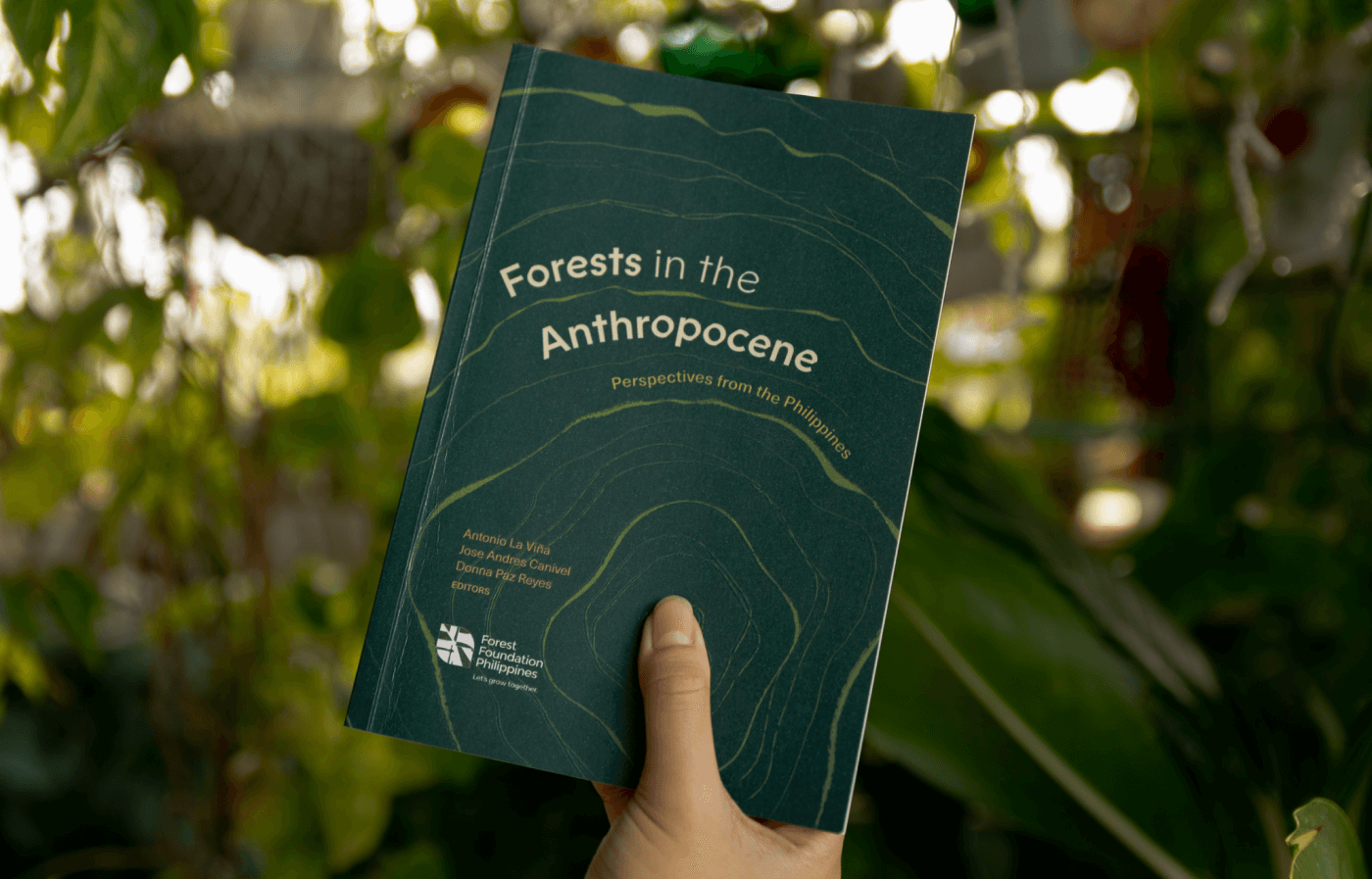
Chronicling the dynamics of humans and forests
With Forest Foundation
SECTOR
PARTNERS
LOCATION
SCOPE
The Anthropocene—or the age of man—is the current proposed geological age that is distinguished by humankind’s dominant impact on our environment. The Philippines is no exception to this: we have lost significant amounts of our tropical forests to human-induced activity such as deforestation, urbanization, and industrialization. Forest degradation impacts not only our climate, but slows down agrarian and economic development while posing disaster risks as well.
The human-forest dynamic is a complex one, with policymakers, academics, indigenous peoples, and forestry entrepreneurs playing especially important roles. Put simply, forests can thrive without humans, but humans need forests for survival. How can we work towards making this relationship more sustainable for future generations?

Forest Foundation Philippines works with groups that protect and conserve our forests. Here, Higaonon community members are trained to use GPS equipment and digital cameras in order to gather data on giant honey bees and abaca plants.
CULTIVATING ACTION
Forest Foundation Philippines is a non-profit organization that provides grants and assistance to projects that share their vision of protecting our forests. As part of the Foundation’s Learning Landscapes Program, they assembled a multidisciplinary research team to create Forests in the Anthropocene: Perspectives from the Philippines, a collection of case studies focused on human and forest dynamics across the country. By equipping us with lessons from our past and trends of our present, the book aims to spur commitment and action for the protection and conservation of our forests.
By equipping us with lessons from our past and trends of our present, the book aims to spur commitment and action for the protection and conservation of our forests.

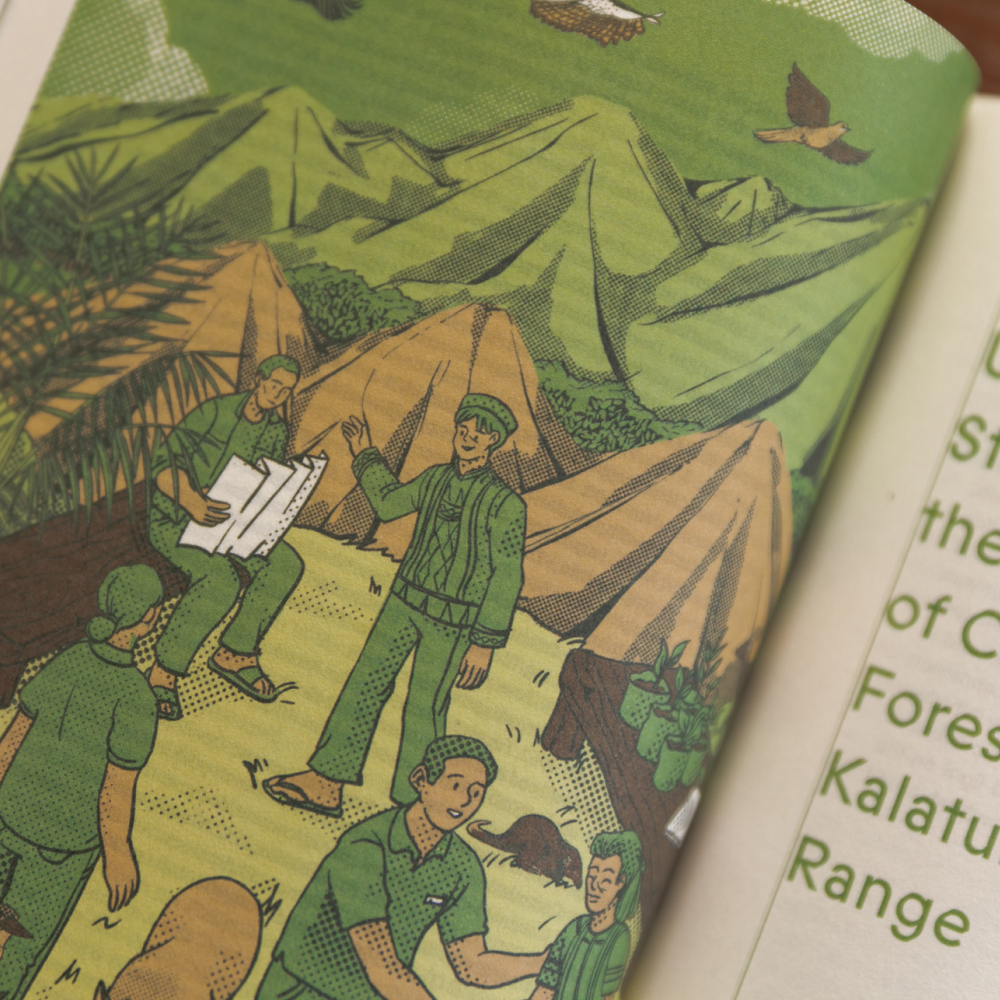
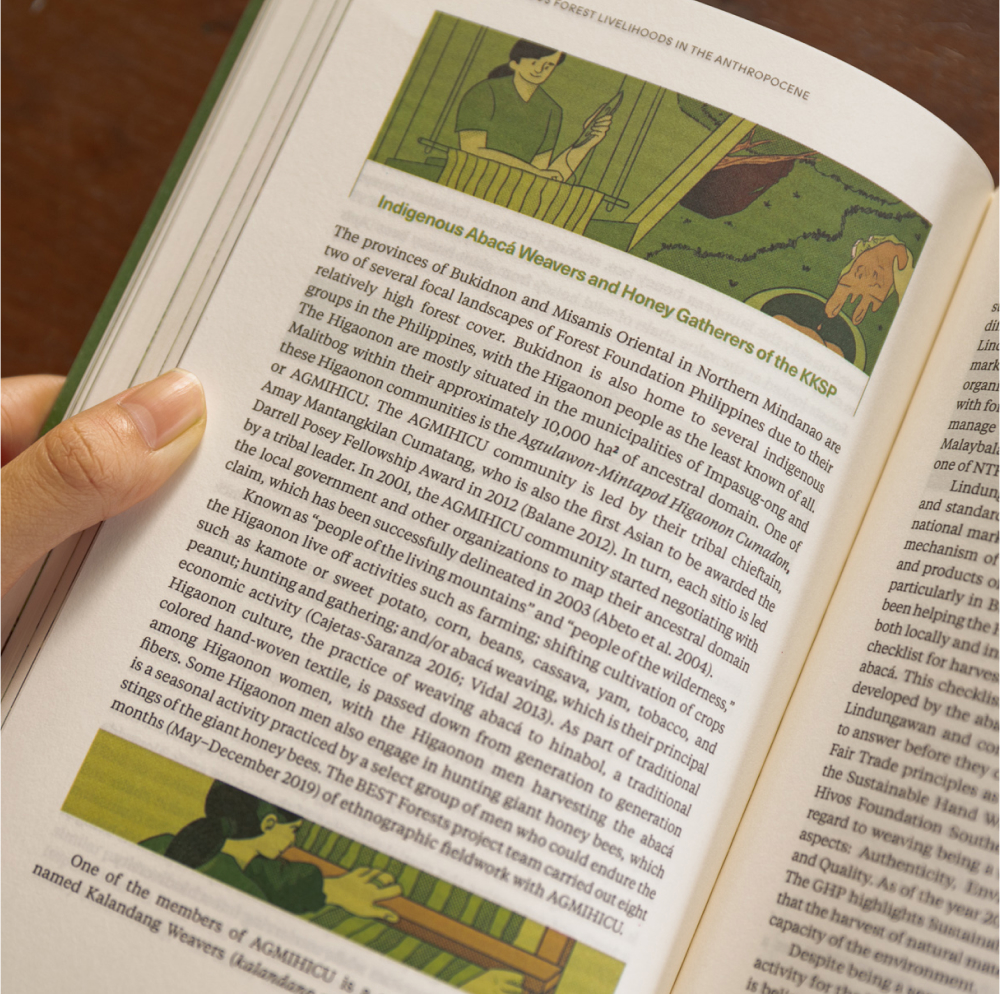
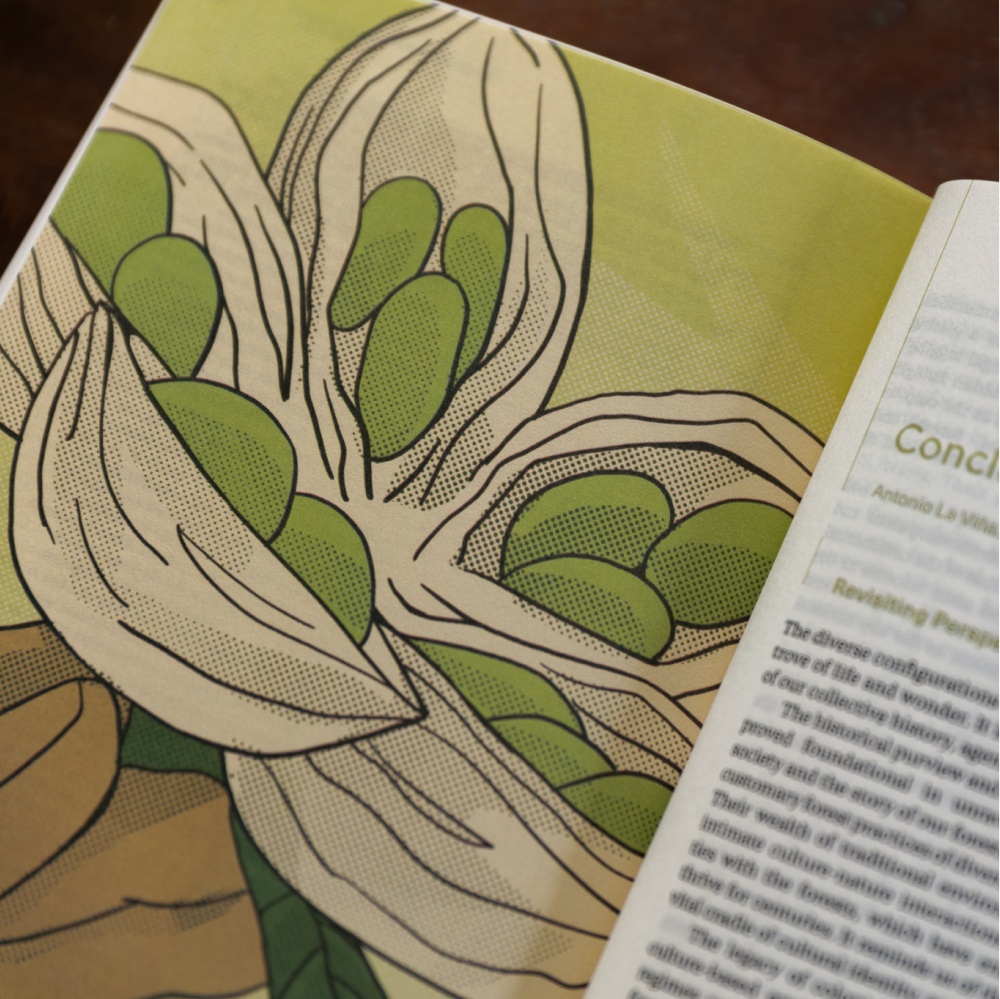
DEEP-ROOTED DESIGN
It was important to balance the urgency and seriousness of the topic with a sense of hope. To visually represent the book’s message, we anchored the creative direction of the book on tree rings, which tell us about the climate conditions of the past. In order to emphasize humankind’s imprint on the natural world, we designed the cover in such a way that, when held, tree rings sprout from the reader’s thumb.
Each case study includes an illustrated abstract that shows different pieces of the forest management puzzle: Indigenous peoples, scientists, forest guards, regular citizens, and even endemic flora and fauna. By focusing on storytelling rather than hyperrealism, the textured illustrations make each chapter more tangible to readers.
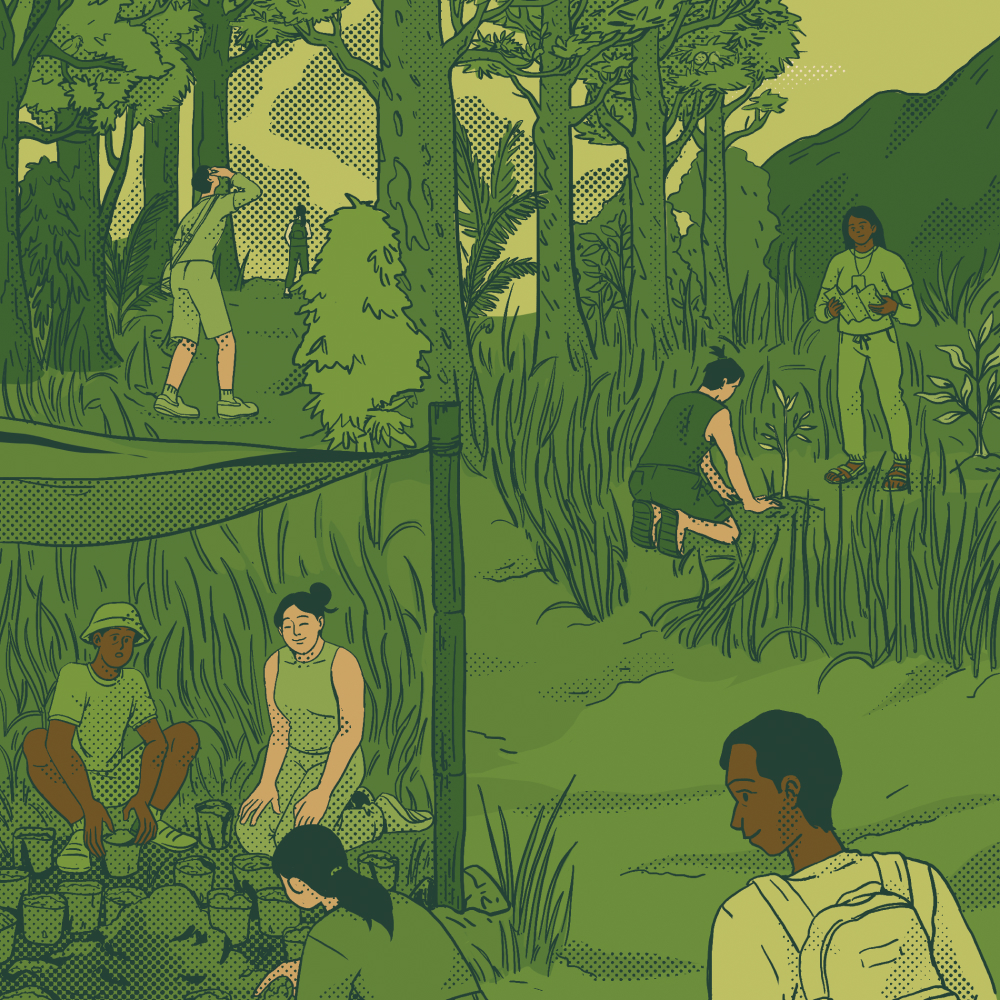
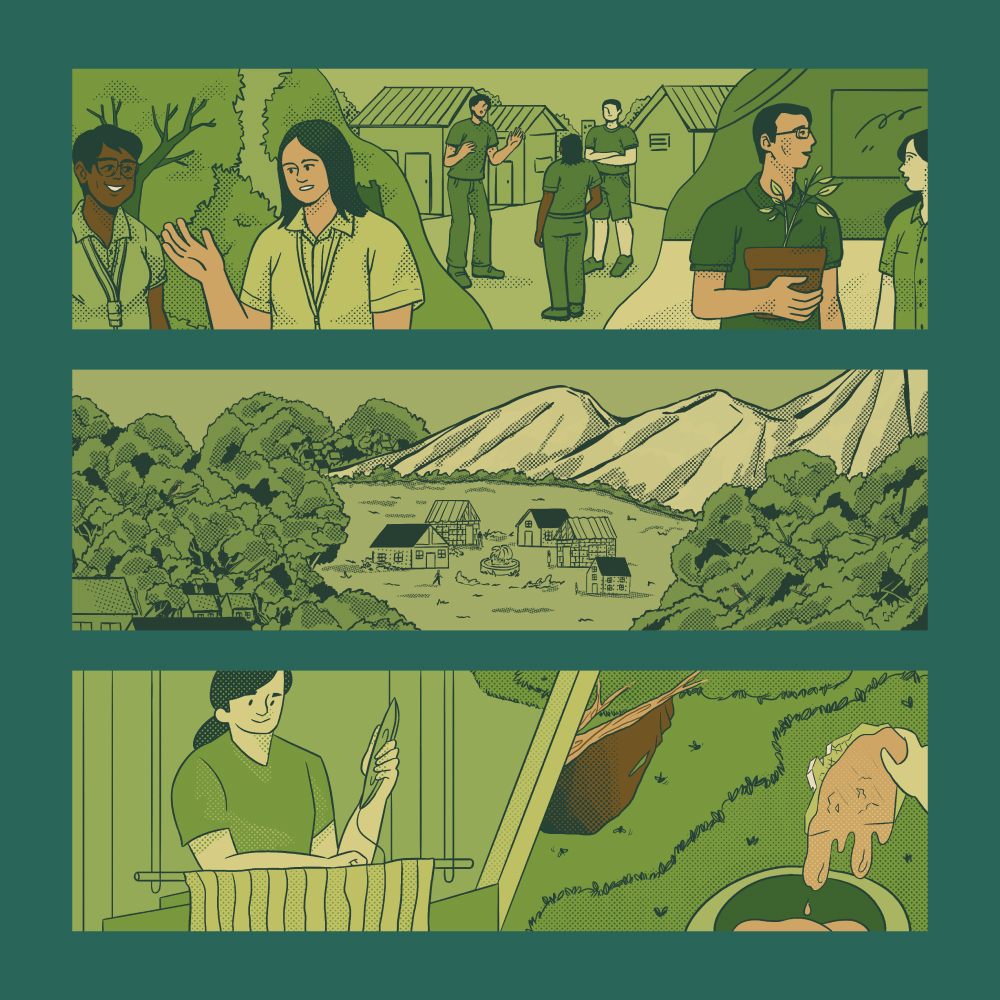
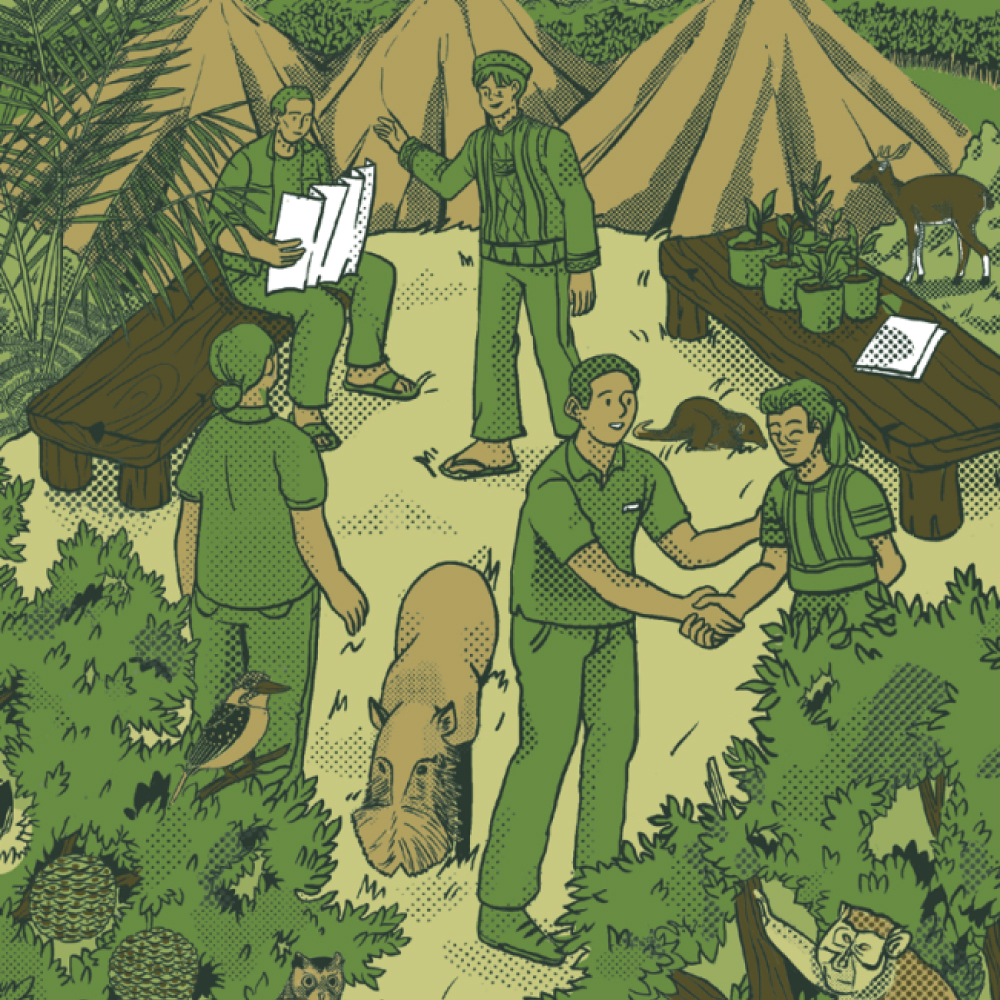
It’s important to show meaningful action and interaction within the illustrations
Only limited copies of the book were published and distributed, so the website serves as the main touchpoint for the general public—it houses a digital version of the book which can be downloaded for free. The website, designed to mimic tree rings, provides summaries of each chapter as well as illustrations featured in the book.

The website concept uses one-page for the entire microsite to provide an immersive, scrollable experience.
Each case study includes an illustrated abstract that shows different pieces of the forest management puzzle: Indigenous peoples, scientists, forest guards, regular citizens, and even endemic flora and fauna. By focusing on storytelling rather than hyperrealism, the textured illustrations make each chapter more tangible to readers.


Forests in the Anthropocene encourages to grow forests of possibilities for our people and future.
SOWING SEEDS
Rather than a grim warning, Forests in the Anthropocene is a seed of hope. In the month of its launch, the book was downloaded 469 times. Bryan Mariano of the Forest Foundation team shares: “The overall concept depicts the message and image of the Anthropocene on a metatextual level... Taken as whole, [the project] can be viewed as an assemblage of material engagement and encounters to learn and be affected in the times we are in.”
The [Works of Heart] team's flexibility has been a key component on this [project]. I also extremely appreciate the team's shared understanding of the value of the work that we do. -Bryan Mariano of Forest Foundation
